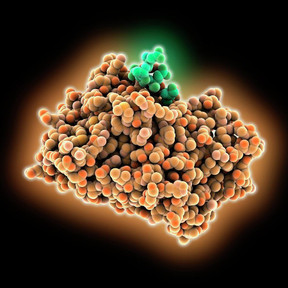Fundamental Biological Mechanisms Underlying EGF Function
Epidermal Growth Factor (EGF) plays a pivotal role in the regulation of cell proliferation, differentiation, and survival. Through binding to its high-affinity receptor EGFR on the cell membrane, EGF triggers a cascade of downstream signaling pathways—such as the MAPK/ERK and PI3K/AKT axes—that drive epidermal renewal and wound closure.
In healthy skin, baseline levels of EGF maintain a dynamic equilibrium between keratinocyte turnover and barrier integrity. When tissue injury occurs, localized upregulation of Epidermal Growth Factors (EGF) accelerates re-epithelialization by promoting fibroblast activity and collagen synthesis. Researchers have also uncovered how EGF modulates inflammatory responses, balancing pro- and anti-inflammatory cytokines to prevent excessive scarring.
This intricate network of signaling events underlies the molecule’s acclaim in regenerative medicine and cosmeceutical applications, offering a biological explanation for its growing inclusion in anti-aging formulations and therapeutic dressings.
Innovative Clinical Applications and Therapeutic Developments
Over the past decade, clinical trials have explored EGF’s therapeutic potential across dermatology and beyond. In chronic wound management—such as diabetic ulcers and pressure sores—topical EGF formulations significantly reduce healing time by up to 40%, according to recent peer-reviewed studies.
Beyond wound care, injectable and topical EGF conjugates are under investigation for hair restoration, mucosal regeneration in oral conditions, and mitigation of radiation-induced dermatitis. Cutting-edge delivery systems, including polymeric nanoparticles, hydrogel matrices, and liposomal carriers, enhance epidermal penetration and extend growth factor bioavailability at target sites.
Translational research is also examining EGF analogues with improved receptor specificity to minimize off-target effects. These advances underscore the molecule’s versatility, meeting rising demand for evidence-based therapies that deliver measurable improvements in tissue repair and skin rejuvenation.
Commercial Landscape and Product Development Strategies
The commercial landscape for EGF-based products spans prescription pharmaceuticals, over-the-counter serums, and cosmeceutical creams. Formulators leverage recombinant human EGF (rhEGF) produced in microbial expression systems to achieve high purity and consistent activity.
Premium skincare brands incorporate EGF alongside complementary actives—like hyaluronic acid, peptides, and antioxidants—to create synergistic effects in anti-aging regimens. Consumers searching for the best EGF serums often compare concentration levels, formulation stability, and clinical efficacy data.
Distributors and contract manufacturers are adopting single-use sachets and airless pump systems to protect EGF from degradation by light and oxygen. As patents expire on early rhEGF constructs, generic and biosimilar versions are emerging, intensifying price competition.
Strategic partnerships between biotech firms and aesthetic clinics further accelerate product adoption, while digital marketing campaigns featuring before-and-after photos cater to the transactional mindset of online shoppers ready to purchase EGF-infused serums.
Key Market Drivers and Competitive Dynamics
Driven by rising skin health awareness and the aging global population, demand for advanced wound care and anti-aging treatments continues to grow. Regulatory approvals for novel EGF therapies and positive safety profiles support market expansion in both developed and emerging regions.
Key drivers include increasing R&D investment in regenerative medicine, growing adoption of minimally invasive cosmetic procedures, and expansion of teledermatology services offering remote prescription of EGF products.
Accessing the Comprehensive EGF Insights Report
For stakeholders seeking in-depth analysis of market trends, competitive positioning, and technology forecasts, the detailed EGF insights report provides actionable data, including segment-wise revenue projections, patent activity mapping, and regulatory updates. Industry users can readily download the full research document or view an interactive executive summary online.
The report’s customizable dashboards and Excel-based forecast models allow business leaders to perform ad hoc scenario planning and cost-benefit simulations. Whether evaluating partnership opportunities or assessing market entry timing, decision-makers will find the navigational tools essential for informed strategic planning within the EGF industry.
Get this report in Japanese language- 上皮成長因子(EGF)
Get this report in Korean language- 표피 성장 인자(EGF)
Read more articles related to this industry-
Recent Developments in Active Pharmaceutical Ingredients Industry
Regulatory Standards for Active Pharmaceutical Ingredients: Ensuring Safety and Compliance
How Active Pharmaceutical Ingredients Are Manufactured: Key Processes and Techniques
About Author:
Vaagisha brings over three years of expertise as a content editor in the market research domain. Originally a creative writer, she discovered her passion for editing, combining her flair for writing with a meticulous eye for detail. Her ability to craft and refine compelling content makes her an invaluable asset in delivering polished and engaging write-ups.
(LinkedIn: https://www.linkedin.com/in/vaagisha-singh-8080b91)

